Consumer appetites are cornerstone of goat industry
Internationally, Australia is responsible for almost half (48%) of goatmeat exports. That’s millions of consumers purchasing, consuming, and enjoying goatmeat from Australian shores.
But who are these consumers? What behaviours or preferences do they have that can impact how we produce goatmeat?
These were some of the questions posed during the three-part ‘Grid to Consumer’ educational webinar series, delivered by Greenleaf Enterprises. This process revealed emerging consumer trends and innovative production practices, set against the intricacies of our contemporary supply chain.
By enhancing information sharing between each step of goatmeat production and processing, Greenleaf Senior Analyst Dr Janine Teese believes Australian producers can better prepare for the industry’s future.
“As a world leader in red meat production, Australia has a reputation for quality, taste, and traceability. This is a reputation we want to see carried into our goatmeat sector,” she said.
“This series was about empowering goat producers to access the necessary information to make informed and strategic choices about their production.
“By understanding ‘who’ is consuming our goatmeat, both in domestic regions and internationally, producers can optimise their ways of working to get the most out of their herd.”
Profiling today’s consumers
Domestic and international demand for goatmeat has increased in recent years. Australian producers are responding to the call with more than 51 tonnes exported in 2024 alone and 48.7 in the first 10 months of 2025. Consumers are at the heart of this uptick.
While goatmeat isn’t considered the traditional ‘star’ of an Australian barbeque, the nation’s multiculturalism is driving demand for more ethnic and authentic cuisine and goatmeat at the forefront. This movement is mirrored on an international scale.
Australia’s biggest export markets are the United States (US), Korea, China, and Canada. Drivers around goatmeat consumption identified throughout the ‘Grid to Consumer’ webinars included:
- Ethnically or culturally motivated: goatmeat is a cornerstone to their cuisine or religious practices.
- Health-conscious: in the US, goatmeat is considered a healthier red meat source with low fat and cholesterol.
- Trend setting: in New York, Caribbean food is ‘trendy’, with growing demand from chefs to access the protein. This influence will expand into further-reaching markets.
Innovative production practices
While demand is up for goatmeat, further growth is needed to ensure all consumer ‘boxes’ are ticked, especially in product consistency and quality.
“The industry is moving toward a standardisation of carcase weight, which is the first big step in mitigating concern over consistency or quality,” Dr Teese shared.
“Any consumer walking into a butcher with $50 to spend on lamb, beef, or pork knows exactly what they are getting for that price point.”
The consumer’s grocery budget and portion size determines their spend, as well as the type of cut they’re picking up from their butcher. Domestically, this looks like consumers wanting to buy a leg or shoulder that is not only within budget but is also the right size and with a fair amount of meat.
“The weight and size of the cut is linked to the carcase weight. Butchers know this and give suppliers carcase size ranges from 10–12kgs, for instance,” Dr Teese elaborated.
“Some customers prefer a bigger leg that is boned out, while others want a leg that is diced. Each customer’s preference relates to carcase traits so it’s critical to know as a producer what the buyer wants and what customers they supply, so you can sell the right animal.
“By establishing guardrails aligned with supply chain expectations for different cuts and quality, all parties benefit.”
Insights in practice
A producer featured in ‘Grid to Consumer’ who is already doubling down on the consistency of the size and weight of her herd is Anita Dennis.
Developing a selection process driven by meat-to-bone ratio, Anita shared how she was managing her herd to turn off her goats young − ensuring they were fit to load and the right weight requirements for processing.
“By using KIDPLAN and being disciplined in our selection process, we’re able to turn off more kids per breeding doe with improved weight-for-age results,” Anita said.
“Controlled mating is central to how we manage our enterprise. It allows us to rotational graze more effectively, spell paddocks and have kids of similar age and size when it comes time to muster.
“We wean our kids when they’re 10−12 months of age with the target weight of 17kg dressed or 35−40kg liveweight” Anita said.
“We generally sell 12 decks at a time, which is roughly about 1,300 head.”
By mustering bucks, does, and kids at the right time during their lifecycle on-farm, Anita is delivering a consistently-sized and high-quality product.
Access the learnings
More than 130 people involved in the goatmeat industry registered to learn insights from the ‘Grid to Consumer’ series and they represented the full breadth of the supply chain.
Want to access the learnings? Recordings and resources from all three webinars are available on the MLA website.



